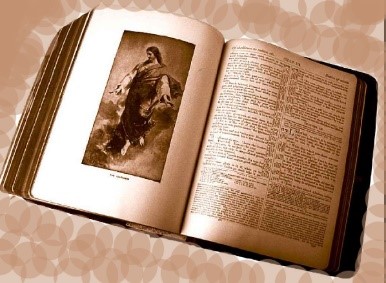Beachy Amish Mennonite Churches

The Beachy Amish are a part of the Anabaptists denomination. The Anabaptists began in Switzerland in 1525. The Amish, Mennonite, Hutterite, and Brethren denominations are all part of the Anabaptists. The Beachy Amish is a confederation of churches called a Fellowship. The Beachy congregation are neither Amish nor Mennonite; they are Amish Mennonite. The Beachy Amish hold to The Dortrecht Confession of Faith. They do practice the Doctrine of Nonresistance, separation from state and adult Baptism from the Anabaptist. The Beachy Amish is the largest modern Amish Mennonite church who broke from the Old Order of Amish.
The Beachy Amish Churches resemble the conservative Mennonite and Brethren congregations instead of the Old Order Amish. The lifestyle of the Beachy Amish are similar to the Old Order of Amish is the church service and the sharing of the Holy Kiss and feet washing as part of the communion service. The women still cover their heads and wear homemade cape dresses. The men wear beards that are shorter in length. Television, and sometimes radio, are forbidden in some of the congregations.
The Beachy Amish Church was established because of a schism that formed between the Somerset County, Pennsylvania congregation and the Casselman River Old Order Amish congregation. It was Bishop Moses M. Beachy who led his congregation during the time of the schism. The Beachy Amish took the name of their leader and favored a milder discipline and less excommunication. The Beachy Amish rejected the practice of shunning for those members who transferred their membership to other Anabaptist churches such as the conservative Amish Mennonite congregation which broke from the Beachy congregation in 1895.
The Beachy Amish Church has revised some of the strictness in the area of technology and discipline. The Beachy Amish have Sunday school, Bible school for the young adults, Meeting Houses, and they support missionary work. The practice of excommunication is rarely observed. The Beachy Amish Church permits the Internet by some of their congregants. Unlike some of the Old Order of Amish there area decline of the congregations speaking the Pennsylvania German language among the Beachy Amish Church. Ready made clothing is permitted by some of the congregations of the Beachy Amish Church.
The Beachy Amish Church established the Amish Mennonite Aid and formed the Mission Interests Committee. They also established the Calvary Bible School. The Calvary Bible School is located at Calico Rock, Arkansas it opened in 1970.
History
The beginning of the Beachy Amish Church was in the Somerset County area in south central Pennsylvania in 1881.
The Amish community had members in both Pennsylvania and Maryland. The Maryland Amish congregation was a more progressive community. The Maryland Amish congregation wanted to provide a Sunday school. This outraged the Amish and the older Mennonite community because the Amish did not have meeting houses, and considered Sunday school a Protestant tradition not belonging to them. This controversy became the reason for the split between the Maryland and the more conservative Amish Pennsylvania communities.
There were three Amish bishops involved in the split up between 1893 and 1895. Joseph Witmer, who assisted the Pennsylvania community, was against the rejection of members for transferring their membership to the Maryland community.
The second bishop was Moses D. Yoder who was an ordained bishop who joined the Pennsylvania community in 1895. Moses D. Yoder led the Pennsylvania community into to the strict rejection of anyone transferring membership to the Maryland community. Joseph Witmer left immediately after Moses D. Yoder had been ordained because Witmer refused to take part in the rejection of the Maryland community.
The third was an Amish ordained minister Moses Beachy. Moses Beachy was ordained in 1912. Four years later, in 1916, Moses Yoder became an inactive bishop. This gave Moses Beachy the position as bishop. Keeping the peace within the Pennsylvania congregation, Moses Beachey agreed with the rejection (called shunning) of any people contact with the Maryland community even though he did not agree with the severity of the rejection.
John D. Yoder, a relative of Moses D. Yoder, decided to withdraw from the Amish group in Pennsylvania and join the Maryland church because of the rejection in 1920. Moses Beachy would not agree to turn away Yoder from the congregation because the question of strict rejection was not unanimously supported. He announced that he would not excommunicate nor would he reject Yoder or any of the Old Order Amish who had become Amish Mennonites. This was the beginning of a large debate concerning the strict rejection or shunning of members joining the Maryland church. Those voicing concern supporting the strict rejection or shunning were Moses D. Yoder, his minister son Noah, and his nephew Joseph. They withdrew from the Moses Beachy community in June 26, 1927.
The Maryland congregation had started to merge with a newly formed Conservative Amish Mennonite Conference. The Maryland congregation was a more conservative Amish Mennonite congregation and more liberal than the Old Order of Amish.
Moses Beachy formed the Beachy Amish Mennonites congregation in Somerset County Pennsylvania. This congregation broke from the Old Order traditions by allowing Sunday school, and continued sharing the meeting houses with the Maryland Amish congregation as they had done in years past. Beachy decided the congregation would leave the banning and shunning question of fellow Amish and Mennonites in the Hands of God. The schism was not only over the practice of shunning but also over the matter of Sunday schools, the use of electricity, and the use of automobiles. Moses Beachy relaxed the dress standards; He rebuked the rule of short hair cuts for men and the wearing of short bonnet fringes for women, and the wearing of gloves in the summer. He repaired their meeting houses and homes and hooked them up with electricity; the congregation was allowed to buy automobiles and tractors by 1929.
Moses Beachy born in 1874 was ordained as a bishop of the Old Order Amish settlement that was known as the Casselman River in 1916 and died in 1945.
Belief
The Beachy Amish Church belief is more individual than that of the Old Order Amish faithful.
The Beachy Amish Church believes in allowing Bible studies. They use the King James Version of the Bible. They emphasize salvation by faith, not salvation by works. They believe Christ as the Son of God and God as the Creator. The Beachy Amish Mennonites believe in the necessity of repentance, obedience and conversion, public baptism and the Lord’s Supper. They practice the “washing of feet” for the example of Christ in the New Testament.
The Beachy Amish Church believes and teaches The Dordrects Confession of Faith. Ministers of the Beachy Amish are selected by the casting of lots. The usual ministerial team is composed of a Bishop, one or two ministers and a deacon in each of the Beachy Congregations. The ministers have the same education as the members of the congregations they lead.
The Beachy Amish Church believes each member of the church should exchange a handshake and the “holy kiss” at the end of the reading of the epistles. The “holy kiss” is likened to the Mennonite congregations practice. The Beachy Amish Church practice acapella singing in the congregational service.
The Beachy Amish Church believes in modest dress of both men and women. Jewelry is moderate or absent. A head covering is required according to the Bible and the doctrine of the Beachy Amish.
The Beachy Amish Church believes becoming a member of the church is an important commitment. Candidates for membership have a six month proving time required. They receive a personal instruction on the practices and the doctrines of the church. The candidates for membership will be called before the whole church to be accepted into fellowship. Non-Baptized candidates may be Baptized at this time. All members of the Beachy Amish Church are expected to share similar beliefs, practices and hold the same visions as the rest of the congregation.
The Beachy Amish Church believes in the ability to divorce. They believe a remarriage is not a marriage but rather an act of adultery. They believe even though past sins can be forgiven through the sacrifice of Jesus Christ a remarriage is considered being in the present state of adultery. They believe if a divorced person wants to become a member of the Beachy Amish Church they must first repent of the sin and discontinue the adulterous relationship. A remarried person may not join the Beachy Amish Church.
The Beachy Amish Church believes it is not wise for a Beachy young woman to be courted by a non-Beachy or non-Mennonite young man. Beachy young people are respectable Christians having strong convictions and Godly values. The young women are traditional Christian women with high moral codes and practices that would make great wives. The courtships of women are very traditional but the women have their own free will to decide how that courtship will continue. The fathers do not marry off their daughters. A young man who is a potential suitor must request to court a young woman; it is the decision of the young woman to decide how she will treat that request.
Cite Article Source
MLA Style Citation:
Holstein, Joanne “Beachy Amish Mennonite Churches:.” Becker Bible Studies Library Jan 2006.<https://guidedbiblestudies.com/?p=2598,>.
APA Style Citation:
Holstein, Joanne (2006, January) “Beachy Amish Mennonite Churches:.” Becker Bible Studies Library. Retrieved from https://guidedbiblestudies.com/?p=2598,.
Chicago Style Citation:
Holstein, Joanne (2006) “Beachy Amish Mennonite Churches:.” Becker Bible Studies Library (January), https://guidedbiblestudies.com/?p=2598, (accessed).


